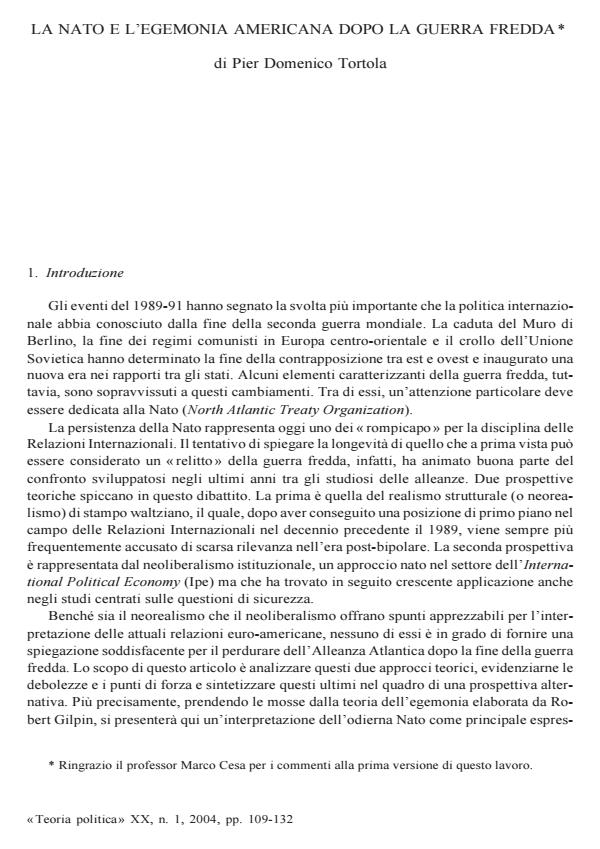La Nato e l'egemonia americana dopo la guerra fredda
Journal title TEORIA POLITICA
Author/s Pier Domenico Tortola
Publishing Year 2004 Issue 2004/1
Language Italian Pages 24 P. File size 78 KB
DOI
DOI is like a bar code for intellectual property: to have more infomation
click here
Below, you can see the article first page
If you want to buy this article in PDF format, you can do it, following the instructions to buy download credits

FrancoAngeli is member of Publishers International Linking Association, Inc (PILA), a not-for-profit association which run the CrossRef service enabling links to and from online scholarly content.
NATO’s persistence (and enlargement) after the end of bipolarity is today a major riddle of international relations theory. Attempts to justify the endurance of what has often been called a «Relic of the Cold War» so far have been led by two main schools of thought, namely Waltzian Structural Realism and the New Liberal Institutionalism. Although both approaches offer valuable aids to understanding today’s Euro-American relations, neither of them can provide a full explanation of the survival of the Atlantic Alliance after 1989-91. The aim of this article is to analyse these two perspectives, identify their shortcomings and their strong points, and synthesize the latter into an alternative theoretical framework. More specifically, building on Robert Gilpin’s hegemonic theory, the author offers an interpretation which posits the Atlantic Alliance as the chief institutional provider of security as a public good within the current US-led international system. In order to substantiate these assertions, he then analyses the evolution of NATO’s attitude towards the external environment as it results from the two Strategic Concepts elaborated by the North Atlantic Council after 1989.
Pier Domenico Tortola, La Nato e l'egemonia americana dopo la guerra fredda in "TEORIA POLITICA" 1/2004, pp , DOI: